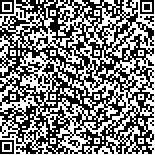| Quote
: |
孙兴利,欧江琴.基于中医传承计算平台挖掘全国名中医戴永生治疗久泻的用药规律[J].湖南中医药大学学报英文版,2022,42(11):1903-1909.[Click to copy
] |
|
| |
|
|
| This paper
:Browser 1826times Download 950times |
| 基于中医传承计算平台挖掘全国名中医戴永生治疗久泻的用药规律 |
| 孙兴利,欧江琴 |
| (贵州中医药大学第一附属医院, 贵州 贵阳 550001) |
| 摘要: |
| 目的 挖掘全国名中医戴永生治疗久泻的组方用药规律,为久泻的临床治疗与新药开发提供参考与借鉴。方法 采集2017年6月至2021年6月戴永生教授治疗久泻的有效医案,采用中医传承计算平台V3.0对医案处方数据进行药物频次、四气、五味、归经等统计,采用关联规则、聚类分析等数据挖掘方法进行分析。结果 纳入医案处方1340个,共涉及173味药。使用频次400次以上的药物共13味,分别是南沙参、白术、茯苓、甘草、陈皮、法半夏、泽泻、黄连、苍术、薏苡仁、白扁豆、枳壳、桔梗。药物中,四气以温性最多,五味以甘味最多,归经以脾经最多,中药类别以补虚类最多。组方规律分析发现,核心方剂为六君子汤加减。结论 戴永生教授治疗久泻采用健脾除湿法,通过健脾以治本,除湿以治标,标本兼治,攻补兼施;治久泻之标湿,则根据湿之不同,选用渗湿、燥湿、化湿、胜湿的分消之法,或单用一法,或多法并用,重点突出,灵活巧妙。 |
| 关键词: 久泻 数据挖掘 用药规律 名医经验 六君子汤 戴永生 |
| DOI:10.3969/j.issn.1674-070X.2022.11.021 |
| Received:January 01, 2022 |
| 基金项目:国家中医药管理局全国名中医戴永生传承工作室建设项目(国中医药办人教函〔2018〕119号);贵州中医药管理局中医药、民族医药科学技术研究课题项目(QZYY-2020-004);贵州省中医药管理局中医药、民族医药科学技术研究课题项目(QZYY-2018-105);贵州中医药大学科研项目(贵中医科院内〔2018〕92号)。 |
|
| Data mining study on medication rules of DAI Yongsheng (National Famous TCM Practitioner) in treating chronic diarrhea based on Chinese Medicine Inheritance Computing Platform |
| SUN Xingli,OU Jiangqin |
| (The First Hospital of Guizhou University of Chinese Medicine, Guiyang, Guizhou 550001, China) |
| Abstract: |
| Objective To explore the prescription and medication rules of DAI Yongsheng, the National Famous TCM Practitioner, in treating chronic diarrhea, and to provide reference for clinical treatment and new drugs development. Methods We collected the effective medical cases of Professor DAI Yongsheng in the treatment of chronic diarrhea from June 2017 to June 2021, and used the Chinese Medicine Inheritance Computing Platform V3.0 to make statistics on the prescription data, such as drug frequency, four qi, five flavors, and meridian affinity, and then further studied using data mining methods including association rule and cluster analysis. Results A total of 1340 prescriptions of medical cases were included with 173 material medicas. There were 13 material medicas used with a frequency of more than 400 times, including Nanshasheng (Radix Adenophorae), Baizhu (Rhizoma Atractylodis Macrocephalae), Fuling (Poria), Gancao (Radix Glycyrrhizae), Chenpi (Pericarpium Citri Reticulatae), Fabanxia (Rhizoma Pinelliae Preparatum), Zexie (Rhizoma Alismatis), Huanglian (Rhizoma Coptidis), Cangzhu (Rhizoma Atractylodis), Yiyiren (Semen Coicis), Baibiandou (Semen Dolichoris Album), Zhiqiao (Fructus Aurantii), and Jiegeng (Radix Platycodonis). Among the material medicas, the warm was the most among the four qi; the sweet tops in the five flavors; the spleen meridian was the most in the meridian affinity; the tonic medicines were used the most frequently. According to the analysis of formula law, we found that the core formula was modified Liujunzi Decoction. Conclusion Professor DAI Yongsheng treats chronic diarrhea by strengthening the spleen and eliminating dampness. He takes measures to strengthen the spleen for root, eliminate dampness for symptoms, treat both the the root and tip, and reinforce healthy qi and remove pathogenic factors simultaneously. For treating symptomatic dampness in chronic diarrhea, he flexibly chooses methods of percolating dampness, drying dampness, transforming dampness, and overcoming dampness, using one method alone or multiple methods with emphasis to remove dampness with differentiation. |
| Key words: chronic diarrhea data mining medication rules experience of famous practitioner Liujunzi Decoction DAI Yongsheng |
|

二维码(扫一下试试看!) |
|
|
|
|


